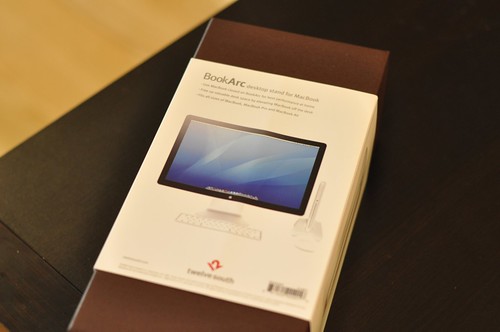Team:Columbia-Cooper-NYC
From 2012.igem.org
MChowdhury (Talk | contribs) |
MChowdhury (Talk | contribs) |
||
| Line 214: | Line 214: | ||
</head> | </head> | ||
--> | --> | ||
| + | |||
| + | |||
| + | <html lang="en"> | ||
| + | <head> | ||
| + | |||
| + | <style> | ||
| + | body {font-family:Arial, Helvetica, sans-serif; font-size:12px;} | ||
| + | |||
| + | .fadein { position:relative; height:332px; width:500px; } | ||
| + | .fadein img { position:absolute; left:0; top:0; } | ||
| + | </style> | ||
| + | |||
| + | <script src="http://ajax.googleapis.com/ajax/libs/jquery/1/jquery.min.js"></script> | ||
| + | <script> | ||
| + | $(function(){ | ||
| + | $('.fadein img:gt(0)').hide(); | ||
| + | setInterval(function(){$('.fadein :first-child').fadeOut().next('img').fadeIn().end().appendTo('.fadein');}, 3000); | ||
| + | }); | ||
| + | </script> | ||
| + | |||
| + | </head> | ||
| + | <body> | ||
| + | <h1>Simplest jQuery Slideshow</h1> | ||
| + | <p>Check out the <a href="/archives/javascript/simplest-jquery-slideshow">blog post</a>.</p> | ||
| + | <div class="fadein"> | ||
| + | <img src="http://farm3.static.flickr.com/2610/4148988872_990b6da667.jpg"> | ||
| + | <img src="http://farm3.static.flickr.com/2597/4121218611_040cd7b3f2.jpg"> | ||
| + | <img src="http://farm3.static.flickr.com/2531/4121218751_ac8bf49d5d.jpg"> | ||
| + | </div> | ||
| + | </body> | ||
| + | </html> | ||
| + | |||
| + | |||
| + | <html> | ||
<h2>Light Sensitive Spatially Controlled Micromachining of Copper Wafers Using Acidithiobacillus Ferrooxidans</h2> | <h2>Light Sensitive Spatially Controlled Micromachining of Copper Wafers Using Acidithiobacillus Ferrooxidans</h2> | ||
<p>The Columbia-Cooper iGEM team is working with Acidithiobacillus ferrooxidans to create a light-controlled printed circuit board manufacturing process. This bacteria’s metabolism relies on its ability to oxidize iron; the iron can then be used to oxidize, and in turn solubilize, copper. By genetically altering the bacteria, we intend to install a light sensitive mechanism which will enable us to etch copper in a desired pattern, leaving a finished circuit board. Once a blank printed circuit board is placed in a thin layer of solid media, the bacteria will be applied onto the surface of the media and light will be focused on it in a desired pattern. The light sensitive mechanism in ferrooxidans would activate and self-destruct in the pathway of the light. In the end, the circuit board will be "etched" by the bacteria everywhere but the illuminated spots, leaving the desired pattern behind on the circuit board.</p> | <p>The Columbia-Cooper iGEM team is working with Acidithiobacillus ferrooxidans to create a light-controlled printed circuit board manufacturing process. This bacteria’s metabolism relies on its ability to oxidize iron; the iron can then be used to oxidize, and in turn solubilize, copper. By genetically altering the bacteria, we intend to install a light sensitive mechanism which will enable us to etch copper in a desired pattern, leaving a finished circuit board. Once a blank printed circuit board is placed in a thin layer of solid media, the bacteria will be applied onto the surface of the media and light will be focused on it in a desired pattern. The light sensitive mechanism in ferrooxidans would activate and self-destruct in the pathway of the light. In the end, the circuit board will be "etched" by the bacteria everywhere but the illuminated spots, leaving the desired pattern behind on the circuit board.</p> | ||
<!--<p>The Columbia-Cooper iGEM team is working with Acidithiobacillus ferrooxidans to create a light-controlled printed circuit board manufacturing process. This bacteria’s metabolism relies on its ability to oxidize iron; the iron can then be used to oxidize, and in turn solubilize, copper. By genetically altering the bacteria, we intend to install a light sensitive mechanism which will enable us to etch copper in a desired pattern, leaving a finished circuit board.</p>--> | <!--<p>The Columbia-Cooper iGEM team is working with Acidithiobacillus ferrooxidans to create a light-controlled printed circuit board manufacturing process. This bacteria’s metabolism relies on its ability to oxidize iron; the iron can then be used to oxidize, and in turn solubilize, copper. By genetically altering the bacteria, we intend to install a light sensitive mechanism which will enable us to etch copper in a desired pattern, leaving a finished circuit board.</p>--> | ||
Revision as of 02:01, 15 September 2012
Simplest jQuery Slideshow
Check out the blog post.



Light Sensitive Spatially Controlled Micromachining of Copper Wafers Using Acidithiobacillus Ferrooxidans
The Columbia-Cooper iGEM team is working with Acidithiobacillus ferrooxidans to create a light-controlled printed circuit board manufacturing process. This bacteria’s metabolism relies on its ability to oxidize iron; the iron can then be used to oxidize, and in turn solubilize, copper. By genetically altering the bacteria, we intend to install a light sensitive mechanism which will enable us to etch copper in a desired pattern, leaving a finished circuit board. Once a blank printed circuit board is placed in a thin layer of solid media, the bacteria will be applied onto the surface of the media and light will be focused on it in a desired pattern. The light sensitive mechanism in ferrooxidans would activate and self-destruct in the pathway of the light. In the end, the circuit board will be "etched" by the bacteria everywhere but the illuminated spots, leaving the desired pattern behind on the circuit board.
 "
"